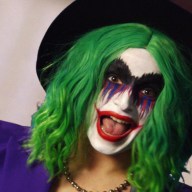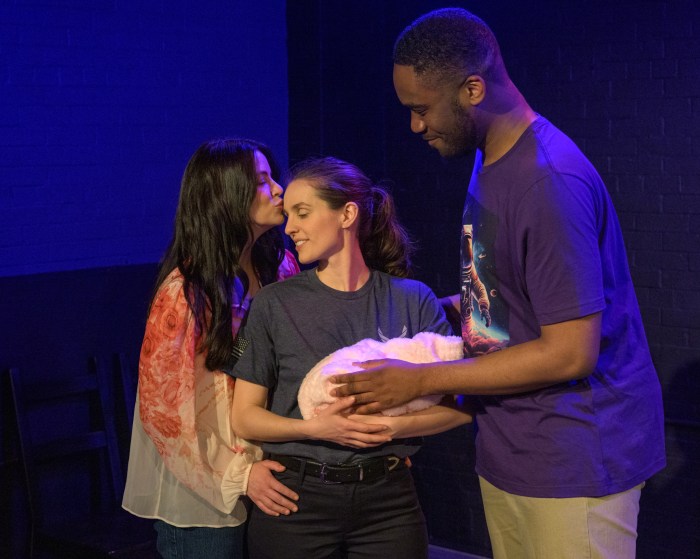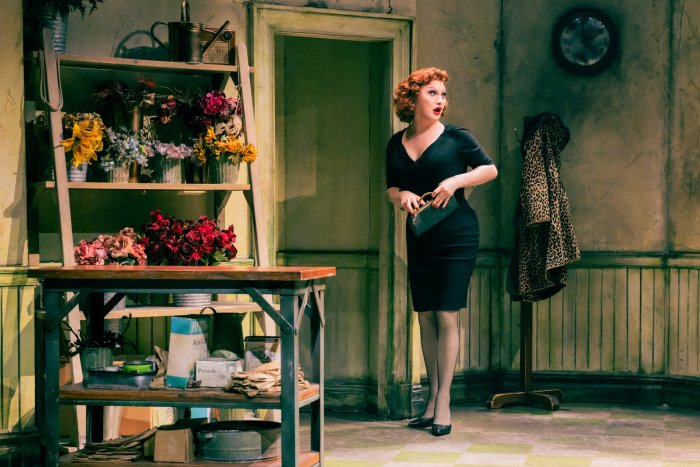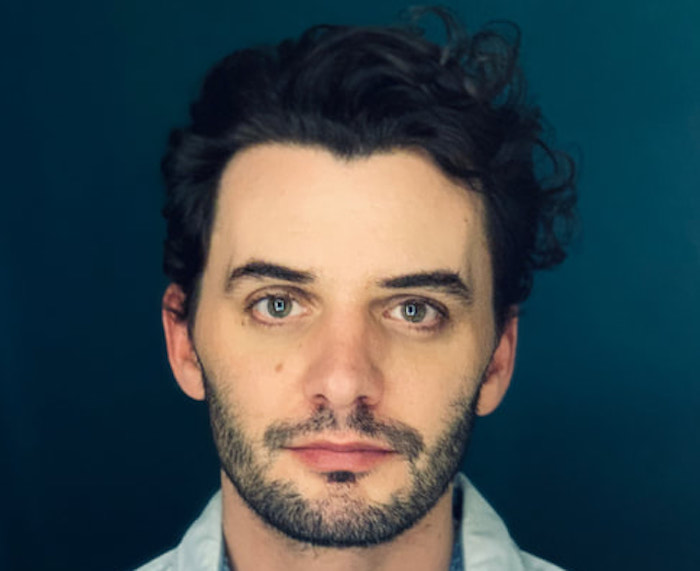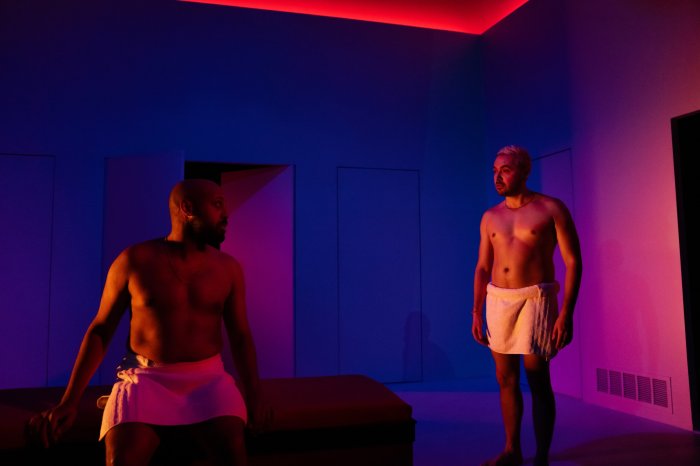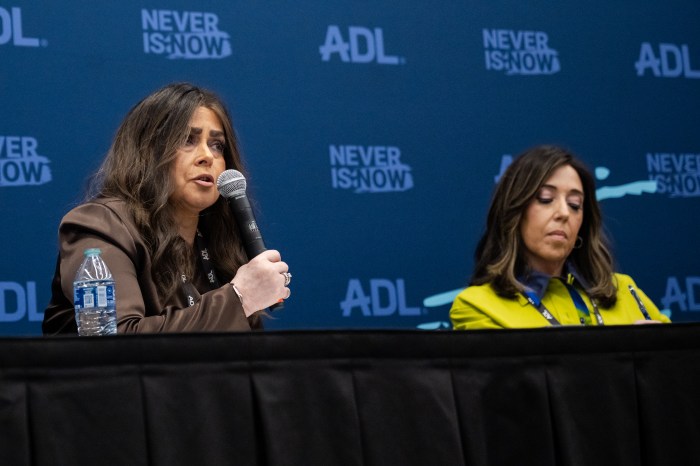BY CHRISTOPHER BYRNE | Ruth leads a nomadic life. At the beginning of “Hunting and Gathering,” she runs through the list (and slide show) of apartments she's lived in as a subtenant, house-sitter, or long-term guest as she tries to make it in the city. As it turns out, she's part of a distinctly New York subculture that manages to hold onto youthful illusions by never having a fixed place of residence, something she shares with her friend Astor.
Jesse has just been divorced by his wife. He's the kind of husband who has never had to fend for himself, so finding a living situation is mostly baffling. Bess is a student who has very specific, if endearingly naïve, attitudes about relationships and what one gets from them -or should try to.
HUNTING AND GATHERING
Primary Stages at 59E59
59 E. 59th St.
Tue. at 7 p.m.; Wed.-Sat. at 8 p.m.
Sat. at 2 p.m.
$60; 212-279-4200
NEXT TO NORMAL
Second Stage Theatre
307 W. 43rd St.
Tue. at 7 p.m.; Wed.-Sat. at 8 p.m.
Wed., Sat. at 2 p.m.; Sun. at 3 p.m.
$80; 212-246-4422
These four characters populate Brooke Berman's light and engaging comedy about finding one's balance in the ever-shifting landscape of Manhattan. Finding a room – or sofa, or futon -of one's own is the metaphor for each character in search of identity. Berman's trenchant wit takes jabs at virtually every neighborhood, lifestyle, and shopping option from Ikea to Whole Foods, and her dialogue is easy and light, even when dealing with more serious matters. Coping mechanisms can range from decamping to a friend's place in the middle of the night to escape decapitated birds to a few rounds of the video game “Big Buck Hunter” to regain one's sense of personal power.
“Hunting and Gathering” charms; “Next to Normal” is close to deadly.
Keira Naughton's performance as Ruth, Michael Chernus as Astor, Jeremy Shamos as Jesse, and Mamie Gummer as Bess are all perfectly pitched and balanced. Director Leigh Silverman keeps the action going wonderfully, and the ingenious set by David Korins imagines New York as a city built from cardboard cartons in a constant state of flux, which, come to think of it, it is.
“Next to Normal” is the Sally Bowles of musicals. Bowles, the would-be chanteuse of the Weimar Republic in “Cabaret” desperately tries to present herself as sophisticated and worldly, even as it becomes increasingly obvious that her shiny veneer is insufficient to mask her superficiality and immaturity.
This flat, uninspiring and derivative musical takes on the merry subjects of bipolar disorder, electric shock therapy, marital dissolution, drug addiction, and that comic mainstay, family dysfunction. It's not that these subjects should be off-limits to a musical. They just should be handled well.
The nearly sung-through show provides little respite from the tedious score with music by Tom Kitt and book and lyrics by Brian Yorkey.
Kitt's music quotes The Who, Sondheim, and others too numerous to mention, but is mostly the kind of fake Broadway rock that trades largely in clanging parallel chords and showy, though invariably shallow, pop-lite ballads. Yorkey's lyrics thud with forced rhymes, and it's telling that the best song in the show, “I'm Alive,” is mostly the endless repeating of those two words.
The story centers on Diana, who struggles with bipolar disorder, hallucinations, and delusional episodes. When she finally has to be hospitalized after a meltdown at Costco, her family – son Gabe, daughter Natalie, and husband Dan – have to struggle on. Dan is a model of codependency, which is pretty hard to make interesting dramatically; Natalie turns to prescription drugs and her new boyfriend Henry, and Gabe… Well, revealing Gabe's secret would kind of ruin what little interest this story has.
Diana ultimately undergoes electric shock therapy, and the end of the first act is an embarrassing number in which she imagines her doctor is a heavy metal star pulling the switch on her. It is so clumsy that it's embarrassing to watch.
Actually, not much really happens after intermission. Diana comes home and tries to get a grip, which she doesn't. Then the cast comes downstage and sings the song, “Let There be Light.” It only feels interminable, and even hints at uplifting, but what in heaven's name are they talking about? Diana has left Dan. Natalie is off drugs but still screwed up, and Gabe has more or less resolved his situation.
Is this a paean to the power of therapy, aggressive electric treatment and psychopharmacology? What, exactly, do we have to feel good about by the end of this show? The intellectual laziness is mind-boggling.
Even more heartbreaking is that the cast is superlative. Alice Ripley is in fine voice as Diana and, in the rare moments she's given some worthwhile material, demonstrates once more what a fine actress she is. Brian D'Arcy James has a rich voice, and a warm presence as Dan. Even when he's singing bilge, he can be affecting. Jennifer Damiano is very good as Natalie. The drug stuff is overwrought and often feels inauthentic, but she shines in her one ballad, “Superboy and the Invisible Girl,” which is an honest expression of a marginalized daughter. Aaron Tveit is outstanding as Gabe. He has a fine tenor and is appealing in that “High School Musical” vein. Given the nature of his character that works very well.









